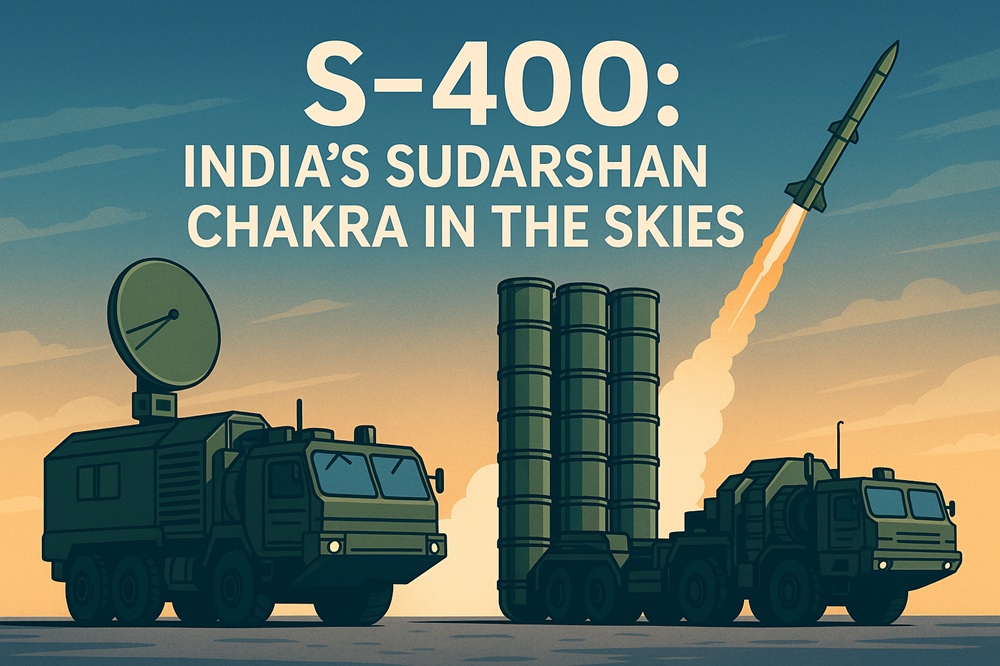In the ancient Indian epic Mahabharata, Lord Vishnu’s Sudarshan Chakra was a divine weapon of unmatched precision, capable of vanquishing any threat. In today’s high-stakes world of modern warfare, India has acquired its own version of that legendary force—the S-400 Triumf air defense system. While it doesn't fly on divine command, the S-400 promises to create a near-impenetrable shield against aerial threats, much like the mythic chakra protected dharma.
What Is the S-400 Triumf?
The S-400 is Russia’s most advanced long-range surface-to-air missile system, capable of detecting, tracking, and destroying a wide variety of aerial targets, including fighter jets, stealth aircraft, cruise missiles, and even ballistic missiles. Developed by Almaz-Antey, the system can engage targets at ranges of up to 400 km and altitudes of up to 30 km.
Key Features:
Engagement Range: Up to 400 km
Detection Range: Up to 600 km
Multi-target capability: Tracks up to 80 targets, engages 36 simultaneously
Missile types: Four, with varying ranges and uses
Target types: Aircraft, drones, cruise and ballistic missiles, stealth aircraft
Why the “Sudarshan Chakra” Analogy?
Just as the Sudarshan Chakra symbolizes supreme protection and strategic superiority, the S-400 gives India a decisive edge in air defense. It forms an invisible dome of security, capable of denying enemy aircraft or missiles access to Indian airspace.
This powerful defense tool serves not only as a deterrent but also as a force multiplier, enabling the Indian military to secure high-value targets like command centers, airbases, and critical infrastructure.
Impact on India-Pakistan Conflict Dynamics
1. Neutralizing Air Superiority
In any future escalation between India and Pakistan, air power would play a central role. Pakistan has advanced fighters like the JF-17 and F-16s, but with the S-400 in place, India can effectively deny airspace access across vast regions—including forward bases and critical command zones.
2. Strategic Deterrence
The mere presence of the S-400 deters Pakistan from initiating large-scale air raids. Knowing that their aircraft could be locked onto and destroyed before even entering Indian territory acts as a psychological and strategic brake.
3. Ballistic Missile Defense
Pakistan has a range of short- and medium-range ballistic missiles. While India has indigenous systems like the PAD/AAD interceptors, the S-400 adds a layered missile shield, especially effective against low-altitude threats and cruise missiles.
4. No-Fly Zones & A2/AD Bubbles
India could impose no-fly zones over key regions like Jammu & Kashmir or Punjab in a conflict scenario, using the S-400 to establish A2/AD (Anti-Access/Area Denial) zones that effectively ground enemy air operations.
Deployment & Operationalization
India signed a $5.43 billion deal with Russia in 2018 for five S-400 regiments. As of 2023, at least two units have been deployed, including one covering the northern and western borders.
Each S-400 regiment includes:
Long-range surveillance radar
Tracking radar
Engagement radar
Command and control vehicle
Launchers (up to 12 per regiment)
These systems are fully mobile and can be repositioned within hours.
Conclusion: Shielding the Nation, Empowering Strategy
India’s S-400 deployment represents more than just a defense acquisition—it's a doctrinal shift. Like the mythical Sudarshan Chakra, it is a force of vigilance, speed, and precision. In the volatile India-Pakistan theater, the S-400 is not just a weapon system—it’s a message: India can defend its skies and strike back with confidence.
As tensions continue to simmer and the nature of warfare evolves, the S-400 will play a crucial role in preserving peace through strength, ensuring that India remains secure, sovereign, and strategically superior.
